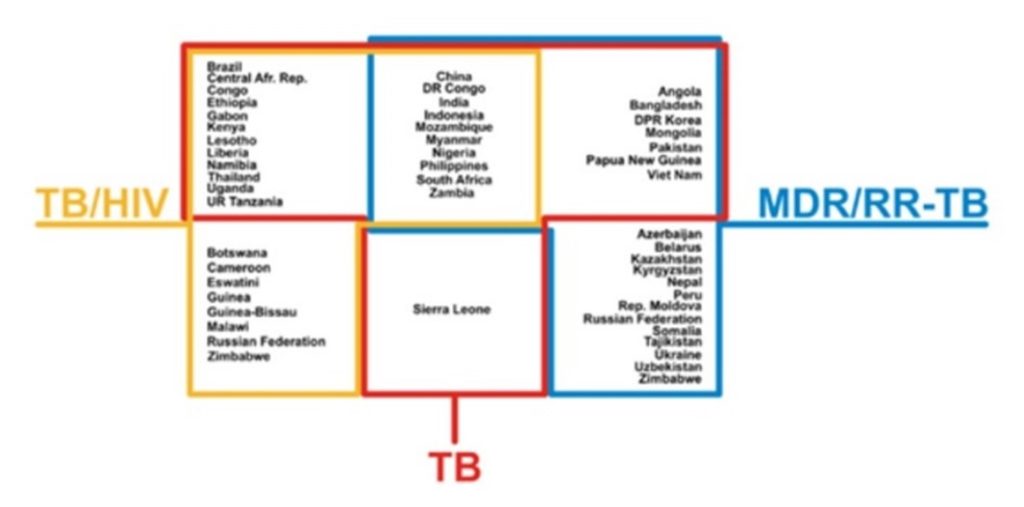Interview with Timo Ulrichs, microbiologist and immunologist specialised in tuberculosis, founder of the Koch-Metchnikov Forum in Germany and member of the Friends of the Global Fund Europe Advisory Committee

What are the main challenges in the fight against tuberculosis to achieve the 2030 targets?
In the WHO European region, we face two main challenges: MDR-/XDR-TB (multidrug resistant tuberculosis), and at the same time an increase in the spread of HIV infections in Eastern European countries, especially Russia.
In addition, the Covid-19 pandemic drew the attention of the healthcare community away from TB control. Many health services faced disruptions, and we saw a rise in TB cases between 2019 and 2021, as well as an increase of the number of missing cases.
Moreover, the Russian aggression against Ukraine is another source of long-term negative effects on TB control in the European region and worldwide. Ukraine has the 4th highest TB incidence rate in the WHO European Region, with 17,593 new TB cases registered in 2020. Shortages of medicines and medical supplies, poor access to essential health services and disruption of prevention, diagnosis and treatment services pose a serious threat to people living with tuberculosis and increase the risk of spread of multi-drug resistant tuberculosis, which is a major global health issue.
Unresolved questions in TB control worldwide and within the WHO European region include mobility and access to TB prevention, detection and care (including palliative care for MDR-TB patients), with specific barriers that put migrants in a particularly vulnerable situation with regard to the disease. Another open question is how tuberculosis control can be integrated into overarching global health approaches, i.e. general concepts addressing health care coverage, general awareness for health issues among political decision-makers with a focus on specific needs in TB control, and comprehensive principles for dealing with different burden of diseases.
What kind of commitments do you expect from international decision-makers on the fight against tuberculosis this year?
To increase funding for both basic research in immunology/vaccine development and diagnostic and therapeutic approaches to control TB; to strengthen systems that work, such as the Global Fund and its programmes, WHO action plans and, in general, health care systems fighting against TB and other health challenges/burden of disease.
2023 started with news about a potential TB vaccine. What can we expect from this vaccine and what about other TB health products?
To reach the SDG targets for TB control in 2030, an effective vaccine would be most helpful. mRNA-based vaccine candidates – a technology refined and widely used during the Covid-19 pandemic – could be game-changers.
But until a new protective vaccine becomes available, we will have to rely on proven prevention tools, based on public health interventions such as preventive treatment, improved diagnostics, increased health literacy and better coverage for TB care structures.
—
24 MARCH 2023: WORLD TUBERCULOSIS DAY
This September, the United Nations is dedicating a high-level meeting to TB, five years after the first meeting that resulted in the adoption of the 2018 political declaration, which set targets to be achieved between 2018 and 2022 as part of the 2030 SDGs.
Tuberculosis is the world’s deadliest infectious disease behind Covid-19 since its apparition and spread. In 2021, it was responsible for 1.6 million deaths.
The high-level meeting, which will bring together all Heads of State and Government, is crucial to analyse the poor performance in the fight against TB and to commit to addressing the political and financial obstacles to achieving the 2030 targets: 90% reduction in TB deaths, 80% reduction in new TB cases and 0% of households affected by catastrophic costs due to TB[1].
Epidemiological situation
In 2021, 10.6 million people suffered from TB (vs. 10.1 million in 2020) and 450,000 cases of drug-resistant TB were reported[2]. 1.6 million people died from TB.
Disruptions in TB control services greatly impacted TB diagnoses and notifications in 2020 and 2021; it is estimated that in 2021, 4 million people with TB were undiagnosed and therefore untreated.
TB affects the whole world, but 95% of TB deaths occur in low- and middle-income countries. 30 countries alone account for almost 90% of global TB cases.[3]

Source: WHO
Drug-resistant tuberculosis accounts for about one in three deaths from antimicrobial resistance. Antimicrobial resistance (AMR) is considered as one of the major threats to public health today globally and including in the WHO European Region.
Intermediate objectives and results of the fight against tuberculosis
Through the political declaration adopted in 2018 at the end of the United Nations high-level meeting, national governments have set several objectives to be achieved during the 2018-2022 period, including:
– 40 million people (including 3.5 million children) on anti-tuberculosis treatment. Between 2018 and 2021, only 26.3 million people were on treatment, including 1.9 million children.
– 30 million people on preventive treatment. Between 2018 and 2021, only 12.5 million people received preventive care against TB.
– Preventive measures among household contact cases to reach 20 million people over 5 years of age, and 4 million children under 5 years of age. Between 2018 and 2021, only 600,000 contact cases were approached in households with people over 5 years old, and 1.6 million in households with contact cases under 5 years old.
– US$ 13 billion in annual funding for TB programmes. In 2005, US$ 5.4 billion was allocated to TB control, i.e. a mere 42% of the resources needed.
– Research and Development funding of US$ 2 billion per year. In 2020, US$915 million was provided for R&D.
The WHO has also set intermediate targets for 2025, as follows[4]:
– 50% reduction in incidence between 2015 and 2025. Between 2015 and 2021, the number of tuberculosis cases decreased by 10%.
– 75% reduction in mortality between 2015 and 2025. Between 2015 and 2021, the number of deaths due to TB decreased by 9%.
– 0% of people affected by TB facing catastrophic costs. In 2021, 48% of people affected by TB faced catastrophic costs.
The role of the Global Fund in the fight against TB
The Global Fund provides 76% of international funding for TB control, i.e. 12% of the total resources available for TB control, which is financed chiefly though national funding.
Since its inception 20 years ago, the Global Fund has invested US$ 8.5 billion in TB control and an additional US$ 5 billion in TB/HIV co-infection programmes.
As a result of Global Fund programmes, 5.3 million people were put on TB treatment in 2021; in countries where the Global Fund invests, TB deaths have fallen by 21% since 2002.
In September 2022, the Global Fund held its 7th Replenishment Conference in New York, hosted by US President Joe Biden. The Global Fund had calculated that it would need at least US$ 18 billion to implement its programmes for the years 2023-2025. Only US$15.7 billion was raised. Almost US$ 2.5 billion will be spent on TB, US$ 154 million more than in the previous round.
Mobilisation for the Global Fund and TB control resources continues, and the high-level meeting will be an opportunity for the international community to strengthen and deliver on its commitment to ending TB by 2030.
—
[1] Comparison with 2015 figures
[2] Global TB Report, October 2022: https://www.who.int/teams/global-tuberculosis-programme/tb-reports/global-tuberculosis-report-2022
[3] https://www.who.int/news/item/17-06-2021-who-releases-new-global-lists-of-high-burden-countries-for-tb-hiv-associated-tb-and-drug-resistant-tb
[4] The End TB Strategy, WHO, 2015: https://apps.who.int/iris/bitstream/handle/10665/331326/WHO-HTM-TB-2015.19-eng.pdf
